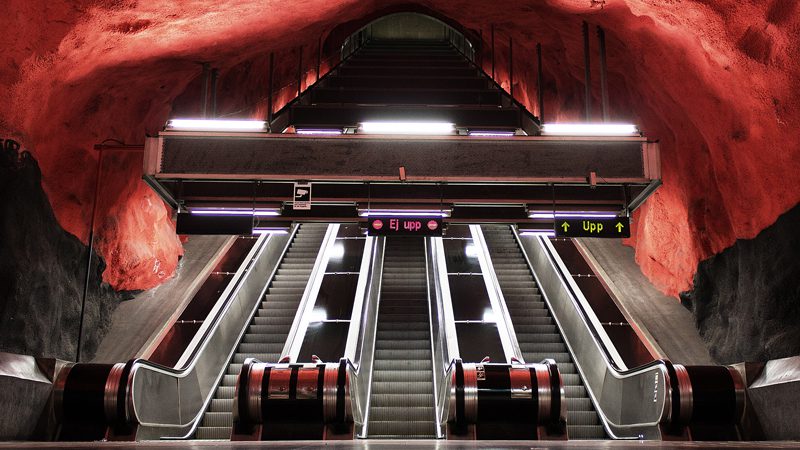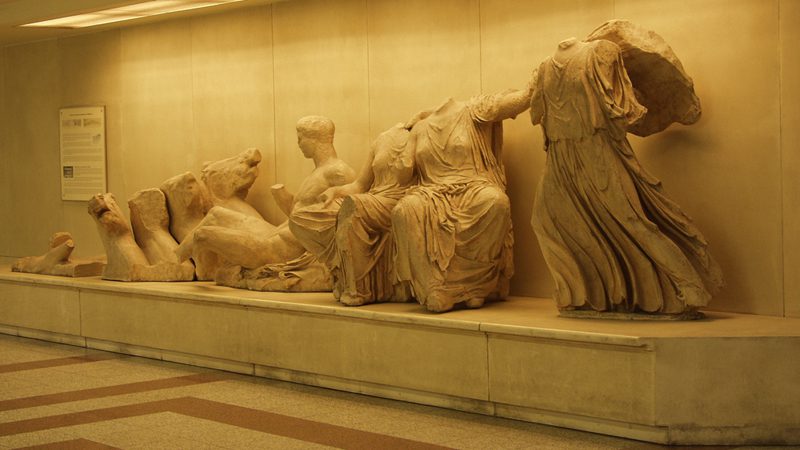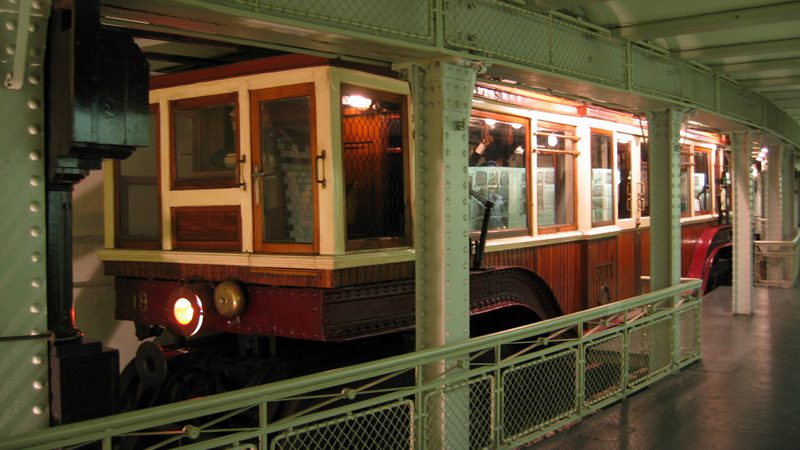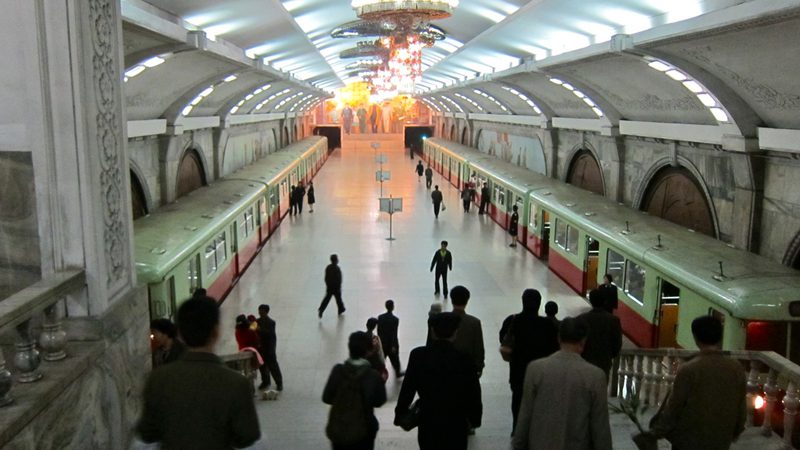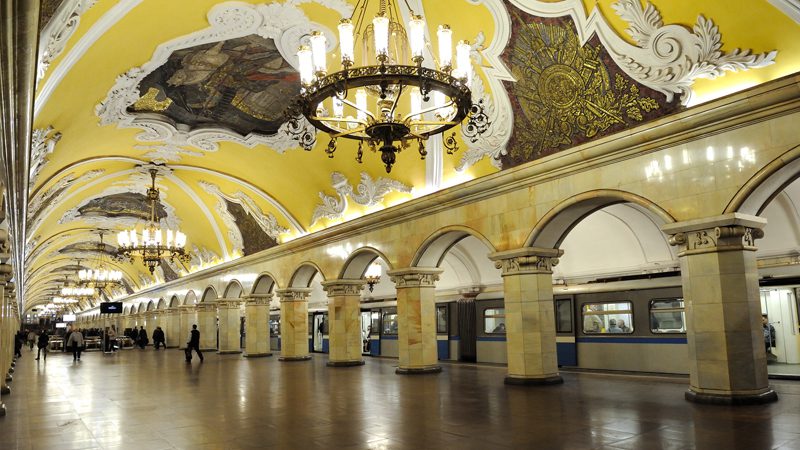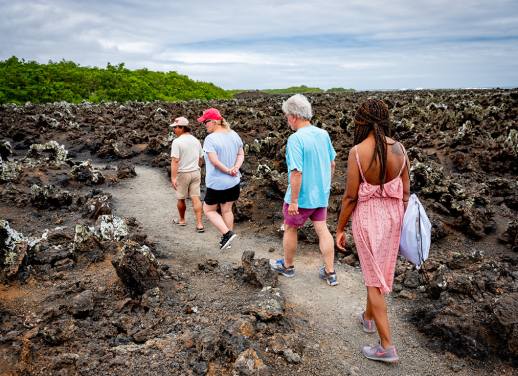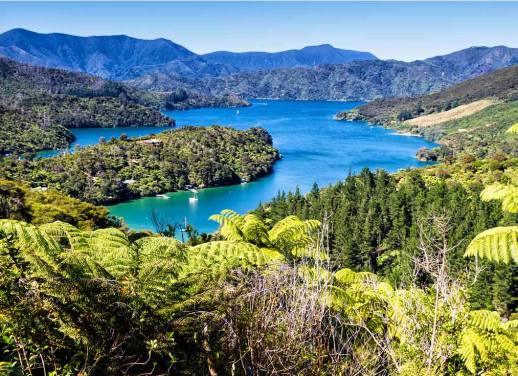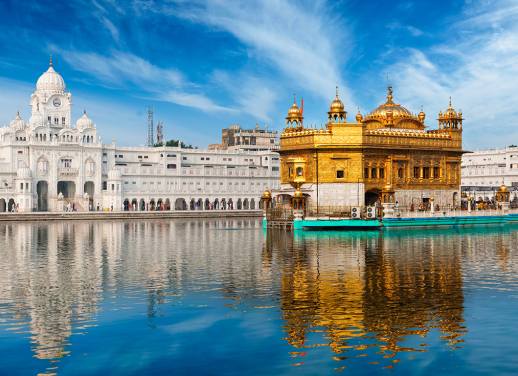Taking the subway’s not usually a memorable experience, unless it’s for the wrong reasons: The dawning horror that you’ve taken the wrong train and getting to the airport in time is now a beautiful distant dream. The realisation that unless you’re a high-level cryptographer you’re not going to decipher the labyrinthine map and find your destination. The unforgettable experience of being smushed up against someone’s armpit in an oven-like carriage; someone who sees showering as a suggestion rather than a necessity.
These cities’ underground transport system will make you think differently though. These are places where the stations themselves are as impressive as any street-level highlight. A top quality cultural experience and a trip across town, all for the price of one ticket? Sounds like a bargain to me.
Athens, Greece – an underground museum
The mid-1990s announcement of a plan to construct an ultramodern underground system in Athens was like Christmas for archaeologists. No doubt they’d probably already dug much of the rest of the country, so the prospect of getting their hands on the capital, one of the longest inhabited cities in the world where every layer of soil holds a new secret, was surely thrilling for them.
The engineers hoped that going 20 metres below the surface would avoid any major disturbance to the classical city, but there was delay after delay as the archaeologists got out their tiny brushes and uncovered a fabulous number of ancient artefacts during the dig. Over 50,000 objects were unearthed, many in perfect condition, creating the largest archaeological site in the city’s history. Thirteen thousand year old tombs, third-century AD Roman baths, and a large stone slab listing the dead from the battles of the Peloponnesian War were all discovered. The stations are now home to this treasure trove, as much underground museum as transport hub, where the stories of thousands of years ago lie alongside modern technology. In Syntama station a tomb encased behind glass features a nearly intact skeleton from the fourth century BC, while the Acropolis stop has full-size replicas of the statues and frieze from the nearby Parthenon.
Budapest, Hungary – highlights and grandeur 2.7 metres below ground
It should be no surprise that the buildings on the banks of the Danube, the Buda Castle Quarter and Andrassy Avenue in Budapest are listed as UNESCO sites – but what about the area directly underneath? The 4.4 km Metro 1, or Millennium Underground Railway, has also been declared “of outstanding universal value”. The line, only 2.7 metres deep, was constructed in 1896 as part of the centenary celebrations of the Hungarian State, making it the second oldest in the world – and the first to be electrified. The 11 station route stops at virtually every major Budapest highlight – the elegant Café Gerbaud, St Stephen’s Basilica, the State Opera House, Heroes Square – and journeys are a ride back in time to the grandeur of the Austro-Hungarian Empire. The stations feature walls covered with original wooden panelling and tiles made by the famed Zsolnay porcelain manufacturer.
Pyongyang, North Korea – things are getting awfully deep
With an average depth of 110 metres the North Korean capital boasts the deepest metro system in the world, and also one of the most secretive. The Soviet-inspired system serves 17 stations, with rumours that the track runs much longer to stop at hidden government bases and nuclear bunkers. Up until recently, limited tourist access to the system led to the rise of a conspiracy theory that the whole thing consisted of just a couple of stations and the normal people riding it were in fact actors. That theory’s been debunked since the slight opening of the country, and it’s estimated 3-7 million people use the bisecting lines, which are still constantly patrolled by military personnel. The two stations that are regularly open to tourists are elaborately decorated with murals to covey the glory of the country’s history and leaders, while patriotic music fills the air between announcements. The other stops, though still painted with propaganda murals, are much more worn down and reflective of their 1970s age.
Moscow, Russia – opulence built for control
When he wasn’t busy brutally repressing the Russian people, Stalin sought to mobilise them, forward to the glorious ”radiant future” that lay head for the Soviet Union. The subway stations of the Russian capital were to be the symbol of this new order, while also acting as a tool of control. These ‘Palaces of the People’, which reproduced the opulence of the grand street-level buildings, would inspire the average worker below and they’d absorb Stalinist values as they rode through stations covered in patriotic designs.
Stops are elaborately constructed in marble and bronze, with columns and cavernous ceilings decorated with stained glass, chandeliers and statues. Just some of the many fascinating and beautiful stations include: Ploshchad Revolyutsii (Revolution Square station) and its life-size bronze sculptures of people of the Soviet Union, from farmers to writers, athletes and schoolchildren, and a dog whose nose brings good luck to those who rub it. Mayakovskaya is a glorious art deco station that’s like Soviet sci-fi, with graceful columns, white, grey and pink marble and 34 ceiling mosaics designed to draw the people upwards physically and spiritually. Komsomolskaya station provides a lesson in Russian military history, while Novoslobodskaya is filled with delicate stained glass panels. Kiyevskyay and Prospekt Mira meanwhile look like rooms taken from one of Peter the Great’s palaces and transported deep underground – intricate frescos, gold leafing and large decorative chandeliers.
Stockholm, Sweden – tunnels of art
Like Moscow, the stations of Stockholm’s Tunnelbana are beautifully decorated, but the style couldn’t be more different. Connecting the fourteen islands of the city and blasted through hard rocky ground, the T-Bana’s 100 stations are like the longest modern art exhibition in the world, featuring artwork from over 140 different artists. The bedrock of the cavernous stations on the Blue Line has been left exposed and artists given free reign to express themselves on the walls. Abstract and Neolithic-like murals sweep across the cave-like walls and ceilings, from cool greys and blues to the blindingly bright red of Solna Centrum. Kungsträdgården is like an archaeological dig with tumbled relics of Stockholm’s history, where water runs down the wall and vines crawl over the ruins; others have statues carved directly into the rock and many stations feature art pieces that you’d normally expect to find in a museum of gallery.

